
by Jules Gomes • ChurchMilitant.com
Catholic church has tabernacle in the form of the phallus of a Hindu deity
DESHNUR, India (ChurchMilitant.com) – An Indian bishop has provoked a backlash from Catholic and Hindus after he celebrated the Holy Eucharist using saffron robes worn by Hindu priests before a tabernacle in the form of a Shivalinga — the phallus of the Hindu god Shiva.
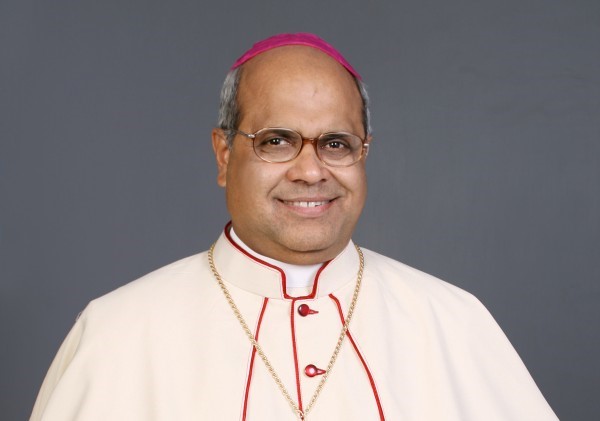
Bp. Derek Fernandes
Bishop Derek Fernandes and his concelebrating clergy were photographed at Mass wearing Hindu clerical vestments and sporting rudraksha malas — a necklace of Hindu beads.
The clerics had also smeared their foreheads with a sacred vermillion paste called tilak — one of the most visible symbols of the Hindu religion.
Fernandes, who was appointed bishop of Belgaum in May by Pope Francis, was photographed in the offending attire on Aug. 29 while on a pastoral visit to a church in Deshnur, 28 kilometers from Belagavi in the state of Karnataka.
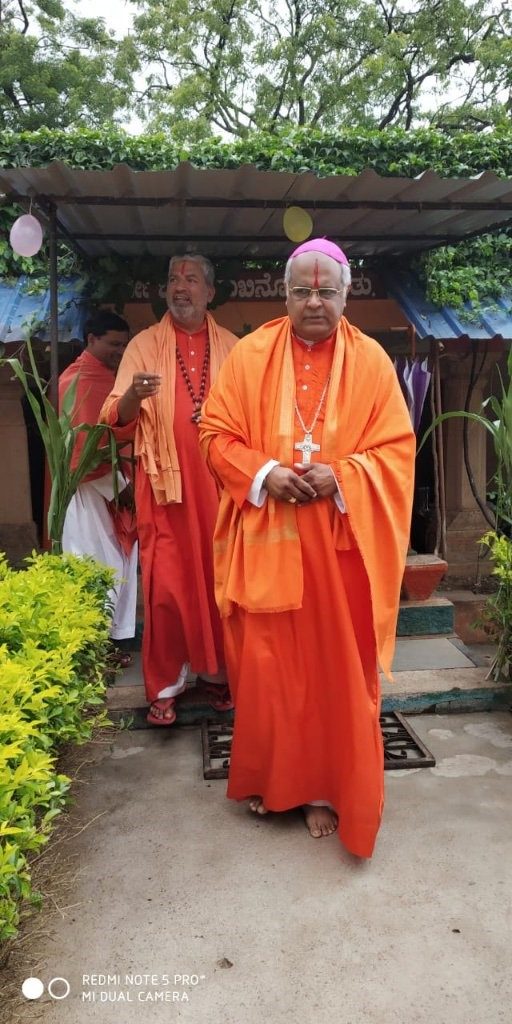
Bp. Fernandes in Hindu robes for Mass
Journalist Savio Rodrigues, who is producing India’s first docu-film on sex abuse in the Indian Catholic Church, released the pictures on social media last Friday, accusing Fernandes of “saffronisation of Christianity.”
Catholics reacted with indignation, assuming that Bp. Fernandes was celebrating Mass with Hindu swamis (holy men) and desecrating the Holy Sacrament.
There was further outrage over the explicit Hindu theological content exhibited by the symbols used.
“Saffron is synonymous with Hinduism. It represents Agni, the Hindu god of fire. It also symbolizes Surya, the sun god, who is the source of truth. More recently, it has come to symbolize the terror of militant Hinduism — mercilessly persecuting Christians,” an Indian Catholic university lecturer, who has written a book on world religions, told Church Militant.
“We don’t worship the sun god but the Son of God and Jesus, who is the way, the truth and the life,” she said, speaking on condition of anonymity.
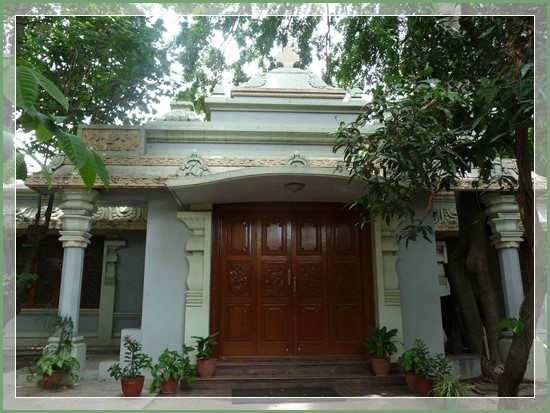
Temple chapel of the National Biblical Catechetical & Liturgical Center
“Rudraksha malas are associated with the Hindu deity Lord Shiva and are commonly worn for protection by his devotees. The tilak is a mark of Hindu Sanatan Dharma — the eternal Hindu religion,” she explained. “It is smeared on a person’s forehead because it is the location through which one can channel Divinity, thus enhancing the spiritual character of an individual.”
“However, what is most shocking is that the tabernacle which houses the real presence of Our Lord’s Body and Blood, should be shaped like a Shivalinga — which is the phallus of the god of fertility and destruction, Shiva, inserted into the female genitals of his consort Parvati,” she pointed out.
Father Nelson Pinto, a priest of the diocese, defended the “inculturation” by explaining that when the first Jesuit priests went to Deshnur, in a predominantly Lingayat (a Hindu sect worshipping Shiva) region, they adopted the local culture.
“The Jesuit priests became vegetarians and embraced other local practices,” Pinto said.
“They did not do it to convert the people who lived there,” he clarified.
However, Hindus have interpreted the act as a covert attempt at conversion and a desecration of Hindu symbolism.
“Is there some way to legally stop this travesty? This is an insult to the ochre robes!” tweeted Shefali Vaidya, author and convenor of the Indic Academy.
“Hey @Pontifex stop them before they start wearing a Trishul (Shiva’s trident) pendant instead of the Cross,” an Indian historian responded.
“Just shows their insecurity in their own religion and a grudging admiration for Vedic traditions,” another Hindu wrote, while a Hindi language tweet called for Christianity to be “finished” in India because “missionaries have become too much.”
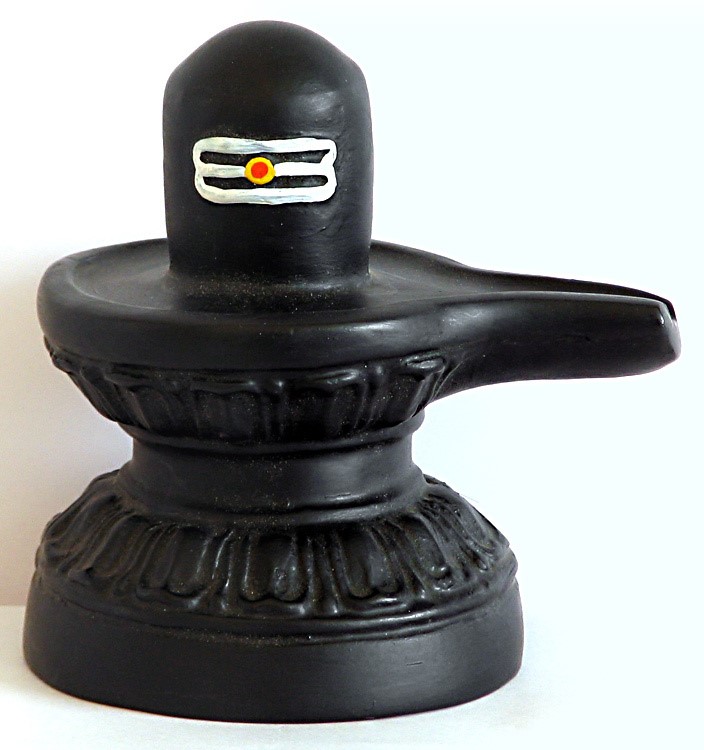
Model of a Shivalinga
The lecturer told Church Militant:
Ironically, the hierarchy of the Indian Catholic Church called for a moratorium on conversion decades ago. They say evangelization is making a Hindu a better Hindu. Most priests are pluralist to the core and have bought into Raymond Panikkar’s The Unknown Christ of Hinduism. They have become glorified social workers who are only interested in pushing liberation theology in villages and now even in cities.
“Gone is the greatness of Jesuits like Roberto di Nobili who adopted certain Hindu customs and baptized them solely to bring high-caste Hindus to Christ,” she added.
The Catholic Bishops Conference of India (CBCI) website lists offices or councils for ecumenism; justice, peace and development; tribal affairs; health care; scheduled castes and social communications, but none for evangelization.
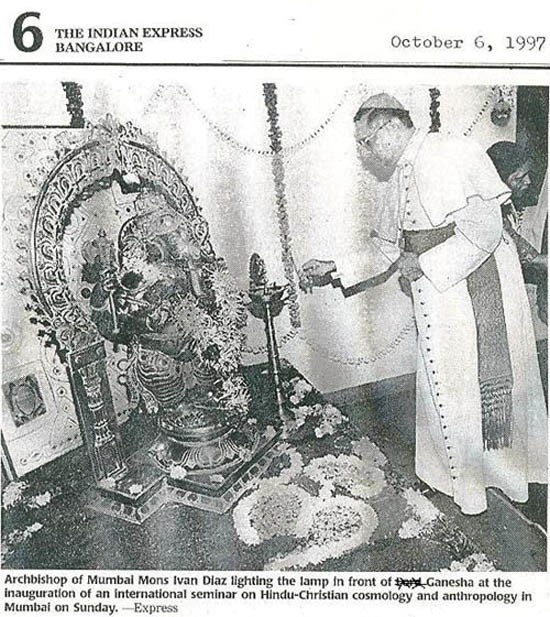
Cdl. Ivan Dias lighting lamp in front of Hindu god Ganesha
In 1969, the Vatican permitted 12 points of adaptation for celebration of the Mass. This has resulted in widespread liturgical abuse, introduction of blatantly Hindu elements in liturgy and widespread confusion among Catholics — particularly converts from Hinduism.
The National Biblical Catechetical and Liturgical Center in Bangalore under the CBCI celebrates Mass with Hindu symbols and has a chapel built in the form of a temple.
Most Indian seminaries and religious houses of formation have adopted Hindu rites for in-house liturgical use, with yoga, “dhyana” techniques of meditation bhajans (Hindu choruses) chanted using the Hindu mantra “OM” and the “Gayatri Mantra” from the Vedas.
The Congregation for the Doctrine of the Faith under then-Cdl. Joseph Ratzinger issued a notification against the writings of Fr. Anthony de Mello after the Indian Jesuit came under Hindu and Buddhist influences.
https://www.churchmilitant.com/news/article/india-bishop-dons-hindu-robes-for-mass-before-ritual-genitalia-of-pagan-gods














